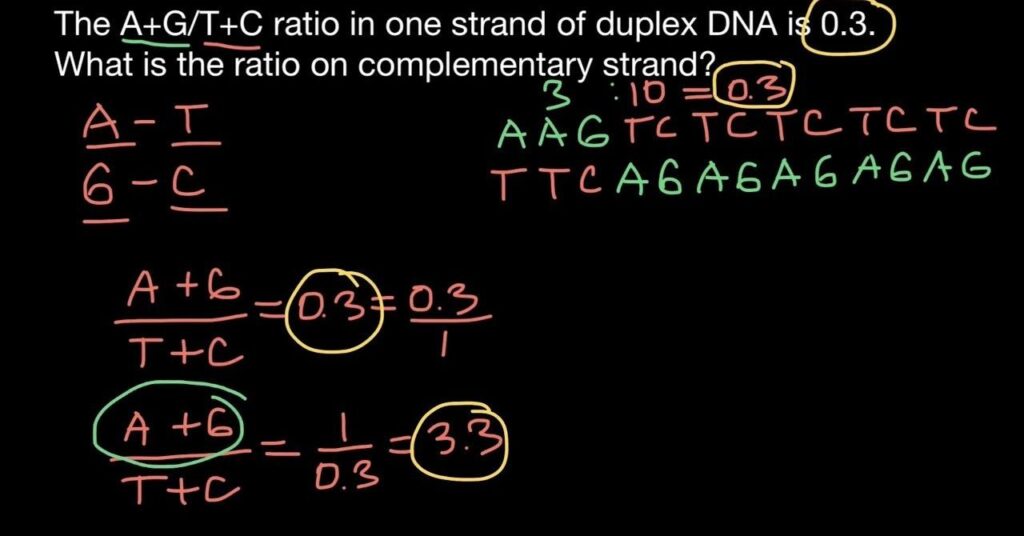Are you curious to know what is chargaff rule? You have come to the right place as I am going to tell you everything about chargaff rule in a very simple explanation. Without further discussion let’s begin to know what is chargaff rule?
What Is Chargaff Rule?
The discovery of the structure of DNA is one of the most significant milestones in the history of science. While James Watson and Francis Crick are often credited with unveiling the double helix structure of DNA, the groundwork for understanding DNA’s structure and behavior was laid by many scientists, including Erwin Chargaff. In this blog post, we’ll delve into Chargaff’s Rule, a fundamental principle that played a pivotal role in deciphering the genetic code and our understanding of DNA.
Erwin Chargaff: The Man Behind The Rule
Erwin Chargaff was an Austrian-American biochemist who made significant contributions to the field of molecular biology in the mid-20th century. His most famous contribution, known as Chargaff’s Rule, was based on his meticulous analysis of DNA composition.
Chargaff’s Rule
Chargaff’s Rule is a fundamental observation about the composition of DNA. It states that in a DNA molecule, the amount of adenine (A) is equal to the amount of thymine (T), and the amount of guanine (G) is equal to the amount of cytosine (C). In other words:
- A = T
- G = C
This rule, sometimes simply stated as “A=T and G=C,” highlights the complementary nature of the DNA bases. Adenine (A) always pairs with thymine (T), and guanine (G) always pairs with cytosine (C). This pairing is a crucial aspect of DNA’s double helix structure.
Significance Of Chargaff’s Rule
Chargaff’s Rule had several profound implications:
- Base Pairing: The rule provided a key insight into the structure of DNA. It explained why the two strands of the DNA double helix are complementary to each other, with A always paired with T and G always paired with C. This knowledge was instrumental in the development of Watson and Crick’s double helix model of DNA.
- Conservation of Genetic Information: Chargaff’s Rule showed that the information encoded in DNA is highly conserved. The equal pairing of A and T, as well as G and C, ensures the fidelity of DNA replication. When a DNA molecule is replicated, each strand serves as a template for the formation of a new complementary strand, preserving the genetic information.
- Understanding Genetic Mutations: The rule also helps explain the consequences of certain types of genetic mutations. For example, if there is a mutation that leads to a substitution of one base for another, it should be matched by a complementary substitution on the opposite strand to maintain base pairing.
- Forensic Science: Chargaff’s Rule has practical applications in forensic science and DNA profiling, where it is used to analyze and compare DNA samples from crime scenes and individuals.
Conclusion
Chargaff’s Rule is a fundamental principle that laid the groundwork for our understanding of the structure and behavior of DNA. It’s a testament to the importance of meticulous observation and data analysis in scientific discovery. The rule’s elucidation of base pairing and genetic information conservation has had far-reaching implications in genetics, molecular biology, and various fields where DNA analysis plays a pivotal role.
FAQ
What Is The Chargaff Rule?
Chargaff rule: The rule that in DNA there is always equality in quantity between the bases A and T and between the bases G and C. (A is adenine, T is thymine, G is guanine, and C is cytosine.) Named for the great Austrian-American biochemist Erwin Chargaff (1905-2002) at Columbia University who discovered this rule.
What Is The Chargaff Rule Class 12?
Erwin Chargaff proposed the Chargaff’s rule. The rule played an essential role in discovering the double-helical structure of DNA. The rule states that in any double-stranded DNA, the ratios between Adenine and Thymine and Guanine and Cytosine are constant and equal.
What Is Chargaff’s Rule In Biology Example?
According to Chargaff’s rule in a DNA molecule A = T and G = C and A + G + C + T = 100%. Here cytosine (C) is 18% hence G = 18% ∴ A + T = (100 – 36)% ∴ A + T = 64% ∴ A = 32% Q. In a double stranded DNA molecule, the percentage of cytosine is 18.
What Is Chargaff’s Rule In Biology Class 11?
Chargaff’s rule states that the concentration of Adenine (A) always equal to the concentration of thymine and concentration of guanine always equal to the concentration of cytosine i.e the amount of purine is always equal to the amount of pyrimidine in a DNA molecule.
I Have Covered All The Following Queries And Topics In The Above Article
What Is Chargaff Rule Class 12
Chargaff Rule Formula
Chargaff Rule Ratio
Chargaff’s Rule A+T=G+C
Chargaff’s Rule Example
Chargaff Rule Pdf
Chargaff Rule Notes
What Is Chargaff Rule
What are Chargaff’s rules?






